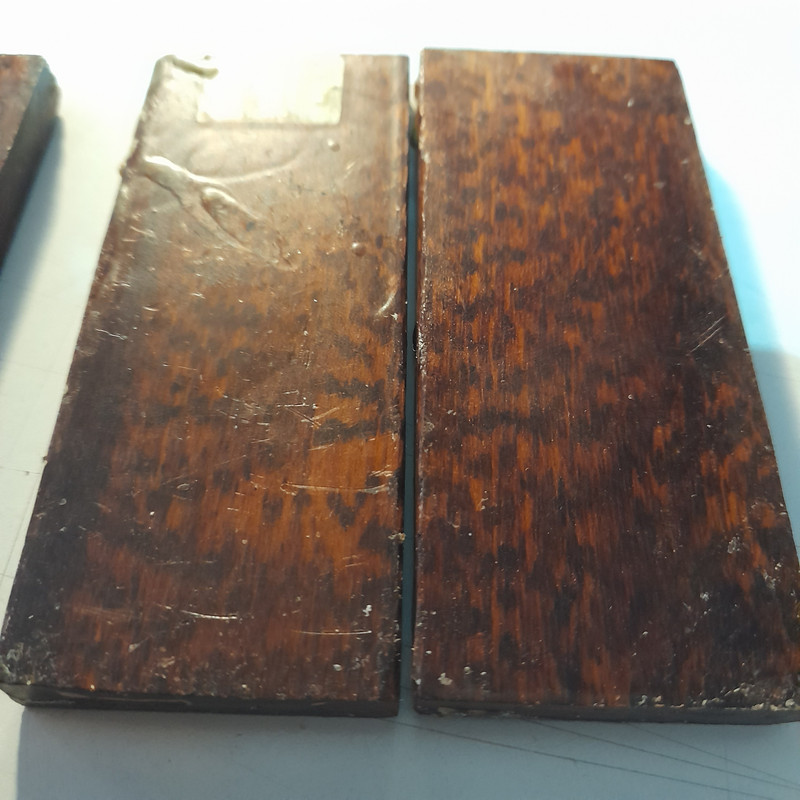I no longer stock snakewood. I bought several logs of it, milled them oversized, let them dry and shipped out the way I would with any other wood.
about 1/2 of my clients came back to me complaining of cracks and checks and other flaws.
Was it due to me not drying it properly?
Was it due to humidity shock from travelling across the country?
Did the clients let the wood get too hot?
Did they leave it in the sun?
Did they try to hammer in pins?
I have no idea, im willing to bet it was some combination of all these factors, but as a seller who works to maintain a sterling reputation it was just too many refunds and too much hassle.
Snakewood is beautiful, but knowing what i do about the wood I am incredibly wary of sellers of it. The cost of the wood, the loss rate in milling, the loss rate in drying, the blocks have to be priced on par with amboyna or high grade ironwood. At least for high figure pieces when you are losing +60% of your material, cheap snakewood simply is not dry. At least at the scale I worked on i am doubtful how it can be done.
As for why your pieces arrived waxed, this is the go to method of larger sellers and those who do not specialize in exotics or high figure pieces. Keeping the pieces completely waxed prevents cracking by almost entirely arresting moisture movement. Wax is typically applied to the ends of a piece, as this is where moisture moved most quickly. By leaving the faces unwaxed, moisture can slowly move out of the wood and the wood will dry/ acclimate. But with difficult to dry woods, even this can result and rampant cracking.
By completely waxing it, a wood seller can sell a piece with zero cracks with the associated premium. If the end user then strips the wax and uses the wood, it will almost certainly crack. But, since it was shipped all waxed with no information, the seller has a convenient excuse for why it is not their fault. It was the user who removed the wax and didnt let it dry. It wasnt the sellers fault, the end user stripped the wax and their actions lead to the cracks and splits.
This is a very common way for the profit minded or simply uninformed to sell exotic wood, as it is often shipped from mills around the world completely waxed to prevent damage during shipping. The responsible thing is to then slowly baby the wood removing wax, limiting moisture movement and slowly dry the wood. But that is slow and expensive, so large sellers just leave wood completely waxed and ship it as is.
Sorry to go on such a rant, but this is one of the reasons wood from me is more expensive. Doing the work and waiting and absorbing the drying losses allows me to sell premium, dry, ready to use material to clients but my prices often look more expensive when compared to those selling green, waxed wood who dont have to deal with those difficulties.




